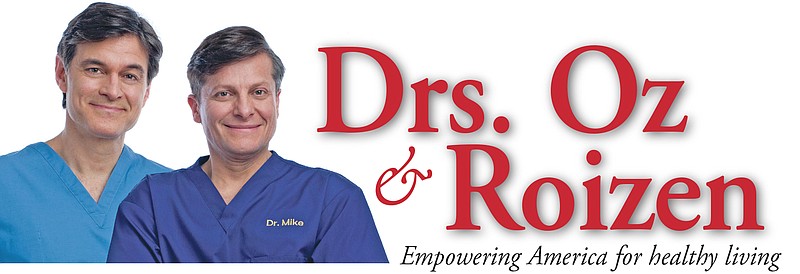If you Google "cholesterol," you'll get 112 million responses. Overwhelming and confusing, to say the least. So we're going to give you a straightforward rundown of what you need to know about: 1) keeping lousy LDL cholesterol under control so it can't ding your blood vessels and cause cardiovascular disease, heart attack, high blood pressure, stroke and peripheral artery disease, and 2) about helping good-for-you HDL cholesterol do its job.
What is cholesterol? It's a waxy, fatlike substance produced by the liver. It's essential for making cell membranes, vitamin D, hormones like estrogen and testosterone, and fat-dissolving bile acids. Your liver and intestines make almost all you need. But cholesterol is also made from the saturated and trans fats in the foods you eat.
Today, high cholesterol is a problem for more than 102 million Americans and almost all because of lifestyle missteps! When cholesterol enters your bloodstream, it's packaged in protein-covered particles. It comes in several forms. There are four types of lousy LDL.
Large particles called chylomicrons carry triglycerides; they're produced in response to what you eat.
Very-low-density lipoprotein (VLDL) particles are made by the liver and also transport triglycerides.
Intermediate-density lipoprotein (IDL) is just passing through as it's changed into regular LDL or removed from your body by the liver.
And, finally, low-density lipoprotein (LDL). It is rich in pure cholesterol and is the culprit that triggers the buildup of heart-stopping plaque in your arteries and veins.
On the other hand, there's high-density lipoprotein (HDL), the good form of cholesterol that helps clear excess cholesterols out of the bloodstream by sending them to the liver for excretion from the body. You need both HDL and LDL to survive, but only in the right amounts and proportion. But how much is too much?
Starting at age 20, you should get a blood test every five years to keep track of your blood lipid levels. It will reveal your total cholesterol, LDL, HDL and triglyceride levels. The recommended targets are:
LDL less than 100 mg/dL; below 70 if you have diabetes or a family history of heart disease, or stroke. We think these recommended LDL numbers will go lower in the future since the lower your LDL, the lower your risk of heart disease and stroke.
HDL of 60 mg/dL or more.
Triglycerides levels of 149 or less (optimal is 100 or less).
Total cholesterol below 200 mg/dL.
To reduce harmful triglyceride and LDL levels and to boost HDL try these three steps:
Step 1: Eliminate all trans and most saturated fats from your diet (red and processed meats, prepared snack foods and bakery goods, especially). Research indicates that trans and sat fats bump up cholesterol because they cause the liver to make more heart-damaging LDL and less heart-friendly HDL.
Step 2: Increase your intake of fiber by adding 100% whole grains and fruits and vegetables. We recommend seven to nine servings of produce and two to three servings of whole grains daily. Fiber reduces blood cholesterol three ways:
It cradles cholesterol so it can be processed out of the body through the digestive tract.
It cuts down on the amount of bile salts that are reabsorbed through the intestine, forcing the body to make more. That requires using cholesterol, lowering what's available to circulate through your bloodstream.
Fiber slows digestion, which keeps your blood sugar levels from quickly rising. That's good, because high blood sugar causes more triglycerides to be formed and they cause more cholesterol to be created.
Step 3: Make sure you get at least 150 to 300 minutes of general physical activity or 75 to 150 minutes of vigorous-intensity aerobic activity or an equivalent combination weekly. According to Dr. Mike's Cleveland Clinic: "Exercise can help lower triglyceride levels and raise HDL levels. Combining exercise with weight loss and dietary changes decreases LDL levels."
That's it: 1-2-3. You'll see your lousy LDL cholesterol and triglycerides drop and good HDL go up, along with your mood and longevity.
Mehmet Oz, M.D. is host of "The Dr. Oz Show," and Mike Roizen, M.D. is Chief Wellness Officer and Chair of Wellness Institute at Cleveland Clinic. To live your healthiest, tune into "The Dr. Oz Show" or visit sharecare.com.
(c)2020 Michael Roizen, M.D. and Mehmet Oz, M.D.

